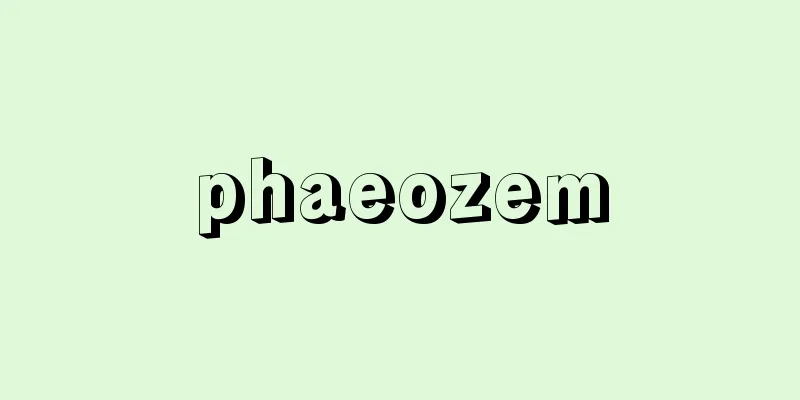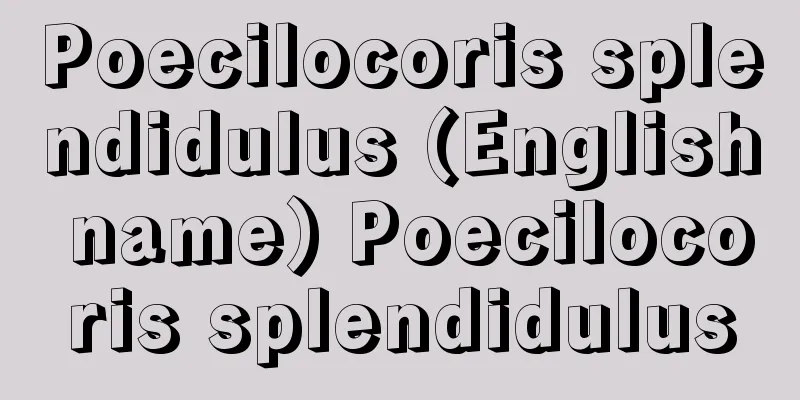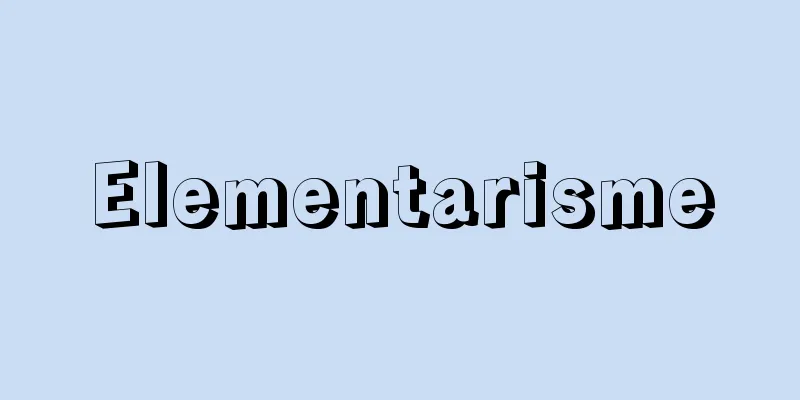Coordination theory

|
This is a concept put forward by the Swiss A. Werner to explain the structure and bonding state of higher-order compounds. The essence of coordinate bonds and coordination compounds has now been elucidated, but in the past the significance of various higher-order compounds, including so-called complex salts, was not understood and there were many questions. It was Werner who organized this and created the concept that is the basis of modern inorganic stereochemistry. [Nakahara Katsunori] Coordination formulaIn 1893, he proposed the following idea about the structure and bonding state of higher compounds. For example, in the molecules of so-called primary compounds, the bonds between atoms are bonded by normal valence bonds, but to form higher compounds, there is a bonding force acting between those molecules. At that time, the bonds in the primary compounds were called main valences, and the bonds acting between primary compounds were called side valences. If the former were represented by solid lines and the latter by dotted lines, the structures of complex salts of cobalt and platinum, which were difficult to understand at the time, could be understood, and the structures of luteo salt (yellow-brown salt) CoCl 3・6NH 3 , purpureo salt (red-purple salt) CoCl 3・5NH 3 , roseo salt (pink-colored salt) CoCl 3・5NH 3・H 2 O, and violeo salt (purple salt) CoCl 3・4NH 3 , which were represented as shown in . Furthermore, it is known that when silver nitrate is added to a cold aqueous solution of these salts, the number of chlorines that precipitate, i.e., the number of chlorines that can be ionized, is 3 for (1) and (3), 2 for (2), and 1 for (4). Therefore, if we write the ionized Cl separately (ligands arranged around the central metal), as shown in the figure, (1) becomes ①, (2) becomes ②, (3) becomes ③, and (4) becomes ④. This gives us a formula consisting of complex cations that are completely different from the original components, i.e., complex ions, and ionized chloride ions. Such a structural formula is called a coordination formula, and Werner called the cobalt atom in the coordination formula the central atom, and the monatomic ions or atomic groups surrounding it, such as NH3 , H2O , and Cl- , i.e., the ligands, occupy positions as symmetrical as possible around the central atom, and called this "coordinate." Based on this concept of coordination, he investigated various complex salts and found that the number of ligands surrounding the central atom (coordination number) is often 6 or 4. He then considered the positions of the ligands relative to the central atom in the case of a coordination number of 6, examined various symmetrical figures, and determined the shape from the formation of isomers. In other words, he concluded that when the central atom is placed at the origin of a three-dimensional orthogonal coordinate system, the six ligands are located at equidistant points in the positive and negative directions on the three coordinate axes, that is, at the six vertices of a regular octahedron centered on the origin. When the coordination number is four, there are two cases: either at the four vertices of a regular tetrahedron, or at the four vertices of a square. For other coordination numbers, various spatial arrangements have been considered. The above is the outline of Werner's coordination theory, which can be said to have been the beginning of elucidating the three-dimensional structure of inorganic compounds, which had been completely unknown until then. However, there were many objections at the time of its publication, and it was not necessarily accepted from the beginning. Werner defeated these objections one by one with experimental proof, and in particular proved the existence of optical isomerism expected from the octahedral spatial arrangement, firmly establishing the correctness of the coordination theory. For this achievement, he was awarded the Nobel Prize in Chemistry in 1913. Furthermore, the correctness of such spatial arrangement was later directly confirmed by structural analysis using X-rays, electron beams, neutron beams, etc., and the term coordination theory has already become classical, and is now called coordination theory. Incidentally, with the progress of bonding theory, the concepts of main valence and side valence mentioned above have been replaced by the modern concept of covalent bonds, with no need to distinguish between them, but the fundamental idea of the coordination theory, that coordination is performed in a spatial direction, is still valid today. [Nakahara Katsunori] [References] | | | |©Shogakukan "> Coordination formula (diagram) Source: Shogakukan Encyclopedia Nipponica About Encyclopedia Nipponica Information | Legend |
|
高次化合物の構造、結合状態を説明するために、スイスのA・ウェルナーが唱えた考え方をいう。配位結合や配位化合物についての本質は、現在解明されているが、古くは、いわゆる錯塩をはじめとして種々の高次化合物についての意義がわからず、多くの疑問のなかにあった。これを整理し、現在の無機立体化学の基礎となる考え方をつくりあげたのがウェルナーである。 [中原勝儼] 配位式彼は1893年高次化合物の構造、結合状態について次のような考え方を提唱した。たとえば、いわゆる一次化合物の分子中では、原子と原子との間の結合は、通常の原子価結合によって結合しているが、さらに高次化合物をつくるのには、それらの分子間に働く結合力があるとした。そのときの一次化合物のなかでの結合を主原子価、一次化合物どうしにさらに働く結合を側原子価とよび、前者を実線、後者を点線で表すと、当時わかりにくかったコバルトや白金などの錯塩の構造が理解されることになり、次のように表されていたルテオ塩(黄褐色の塩の意)CoCl3・6NH3、プルプレオ塩(赤紫色塩)CoCl3・5NH3、ロゼオ塩(バラ色塩)CoCl3・5NH3・H2O、ビオレオ塩(紫色塩)CoCl3・4NH3などはのようになる。さらに、これらの塩の冷水溶液に硝酸銀を加えたときに沈殿する塩素の数、すなわちイオン化できる塩素の数は、(1)および(3)では3、(2)では2、(4)では1とわかっているので、イオン化するClを区別して書くと(配位子を中心金属の周辺に配列)、図のように(1)は①、(2)は②、(3)は③、(4)は④となり、元の成分とまったく異なった複雑な陽イオン、すなわち錯イオンと、イオン化する塩化物イオンからなる式が得られる。 このような構造式を配位式coordination formulaというが、ウェルナーは配位式中のコバルト原子などを中心原子とよび、これを取り巻くNH3やH2O,Cl-など、単原子イオンあるいは原子団、すなわち配位子が、中心原子を中心としてできるだけ対称的な位置を占めるものと考え、これを「配位する」(coordinate)といった。このような配位という概念に基づいて、各種の錯塩を調べると、中心原子を取り巻く配位子の数(配位数)は、多くの場合6または4であることがわかった。そこで配位数6の場合、配位子は中心原子に対してどのような位置を占めるかを考え、各種の対称的図形を検討し、異性体のでき方からその形を決定した。すなわち、中心原子を三次元直交座標の原点に置くとき、六つの配位子は三つの座標軸上の正および負方向への等距離の点、つまり原点を中心とする正八面体の六つの頂点に位置すると結論した。配位数4のときは、同じく正四面体の四つの頂点に位置するときと、正方形の四頂点にある場合との二つがある。その他の配位数の場合にもそれぞれの空間配置が考えられている。 以上がウェルナーの配位説の大要で、それまでまったく不明であった無機化合物の立体構造の解明の端緒となったものということができる。しかし発表された当時は多くの反対論もあり、かならずしも最初から受け入れられたわけではない。ウェルナーはそれらの反論を一つずつ実験的証明によって打ち破り、とくに八面体型空間配置から予想される光学異性の実在の証明を行い、配位説の正しいことを確固たるものとした。彼はこの功績により1913年ノーベル化学賞を受賞している。またこのような空間配置の正しいことは、その後X線、電子線、中性子線などを用いる構造解析によって直接確かめられており、配位説ということばはすでに古典的なものとなっており、現在では配位理論といっている。なお、先の例にあげた主原子価、側原子価の概念は、結合論の進歩に伴い、なんら区別する必要もなく、現代的な共有結合の概念に置き換えられてはいるが、空間的な方向性をもって配位するという配位説の根本的な考え方は、そのまま現在も通用している。 [中原勝儼] [参照項目] | | | |©Shogakukan"> 配位式〔図〕 出典 小学館 日本大百科全書(ニッポニカ)日本大百科全書(ニッポニカ)について 情報 | 凡例 |
>>: Coordinated water - Haisui (English spelling)
Recommend
Sanagouchi [Village] - Sanagouchi
A village in Meito County, eastern Tokushima Prefe...
Arage Peacock - Arage Peacock
… The genus Adiantum is common in tropical and wa...
Police officer - Rasotsu
〘Noun〙① A soldier on patrol. A patrol soldier. ※Es...
Hakke Hakko - Eight Lectures on the Lotus Sutra
This is a Buddhist ceremony in which the eight vol...
Six Paths - Rokudo
In the Buddhist idea of reincarnation, the six ...
American Institute of Electrical Engineers
…In 1889, he invented Manganin wire, which has a ...
Camera Eye
...This work uses experimental modernist techniqu...
Trease, H.
…Adventure novels also developed through J. Masef...
Trease, G. (English spelling) TreaseG
…Adventure novels also developed through J. Masef...
Guatemalan Grebe - Guatemalan Grebe
… There are about 6 genera and 20 species of the ...
Flower cannon
...It is said that the Mongol Empire was built on...
Mengrai
…King of the Thai kingdom of Lannatai. Also calle...
Emperor Gosai
Year of death: 22nd February, 1685 (26th March, 16...
sheet erosion
…Rain wash is the process by which rainwater dire...
Abalos Family - Abaloske
...It is known for its beautiful nature, hot spri...









